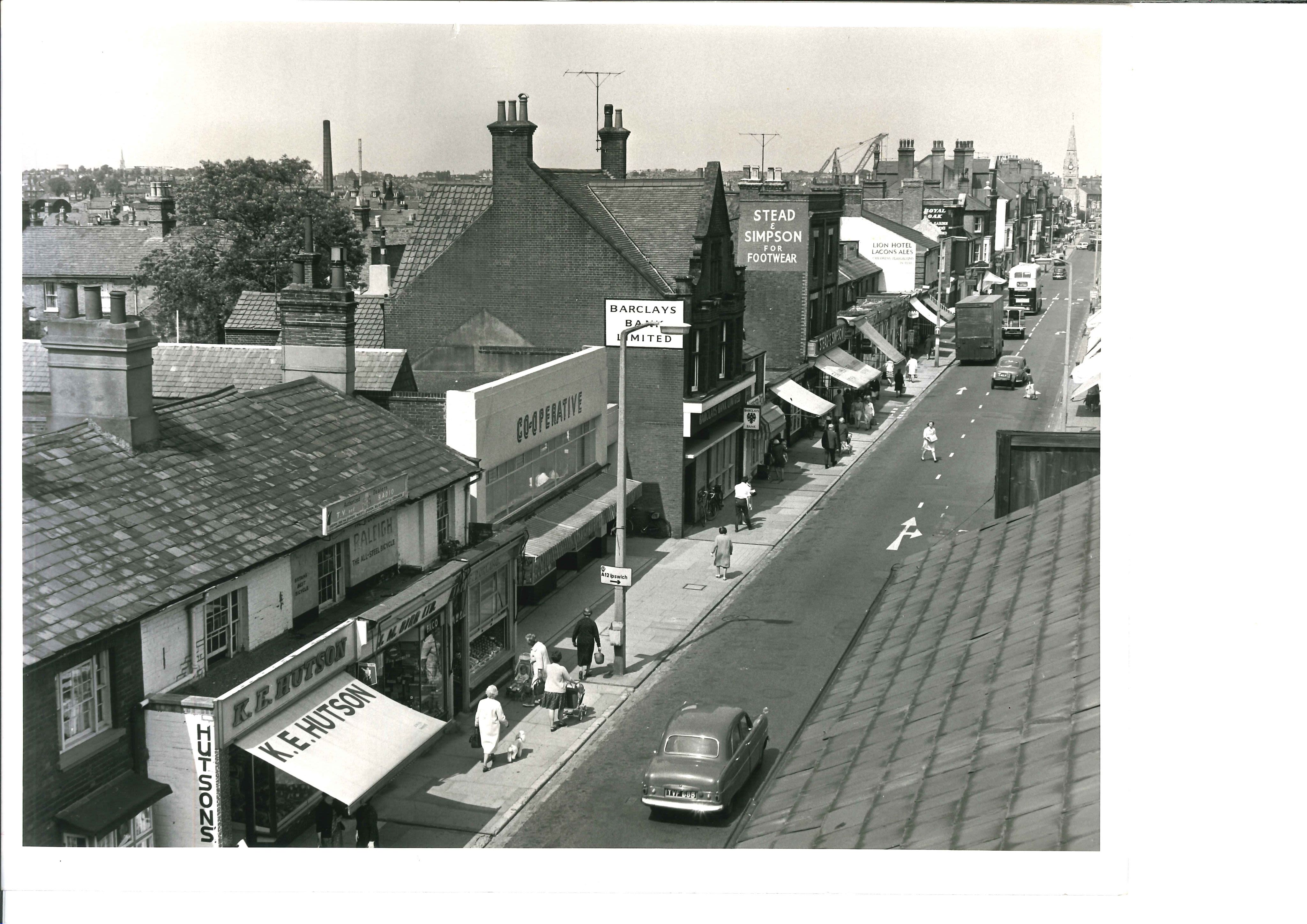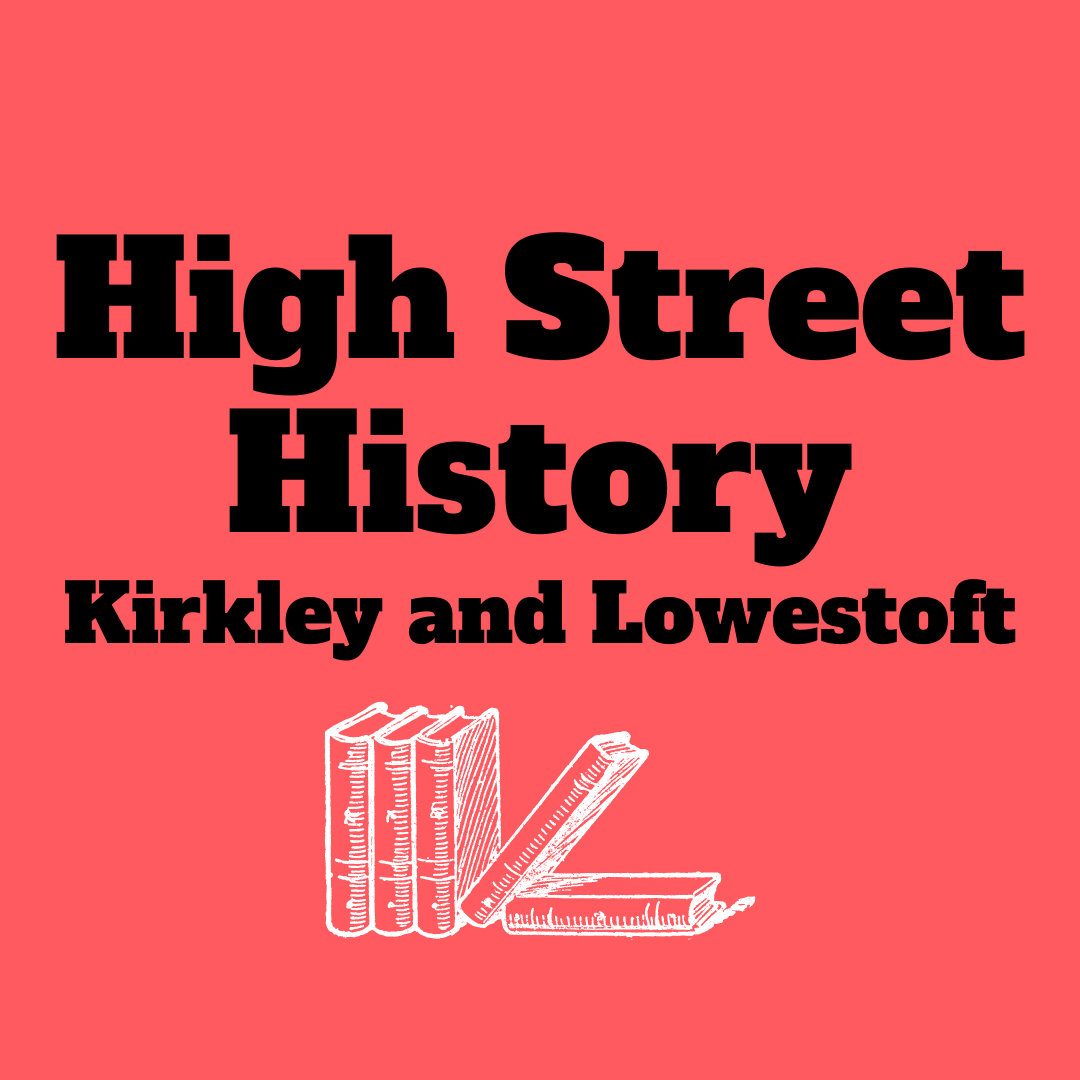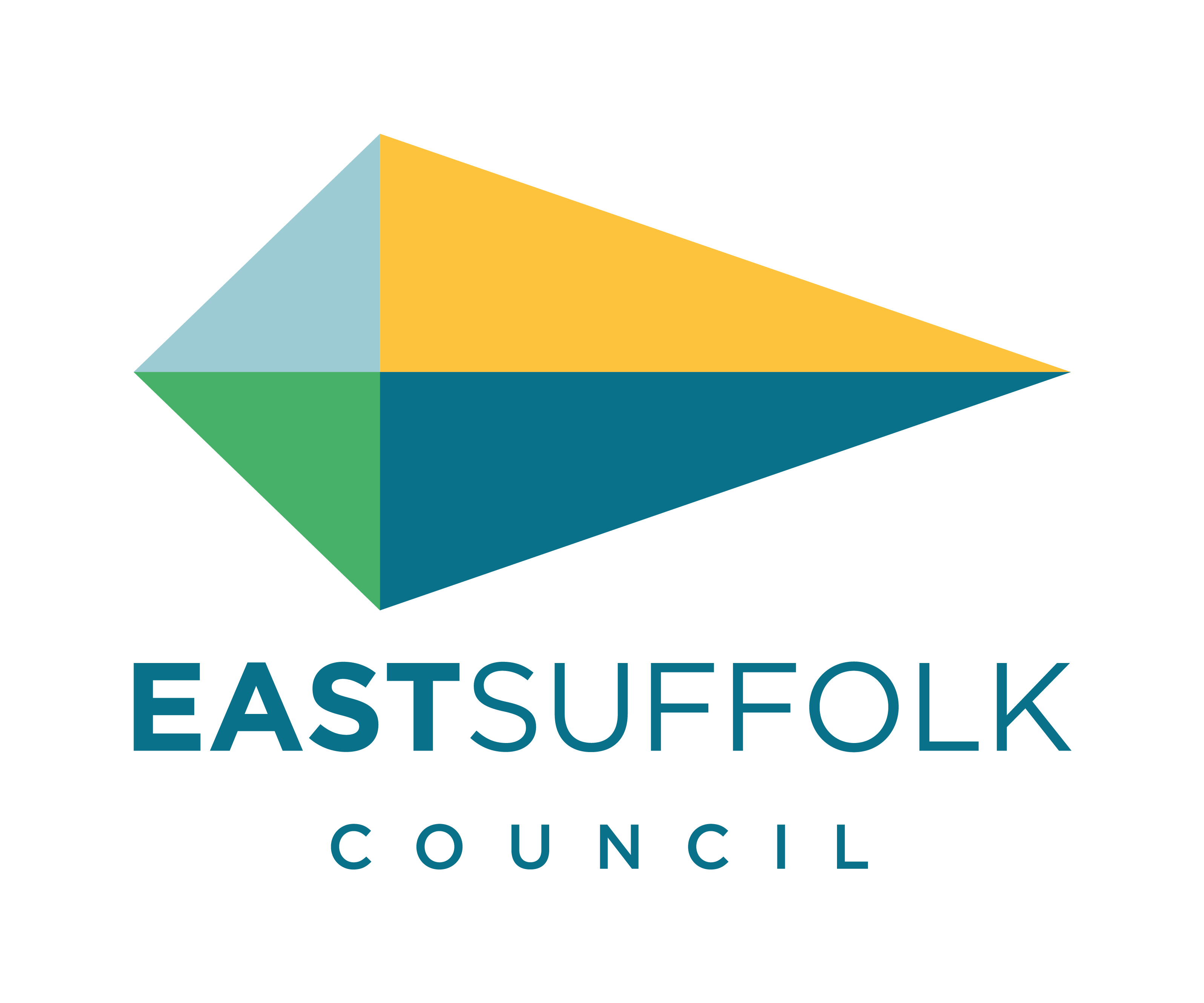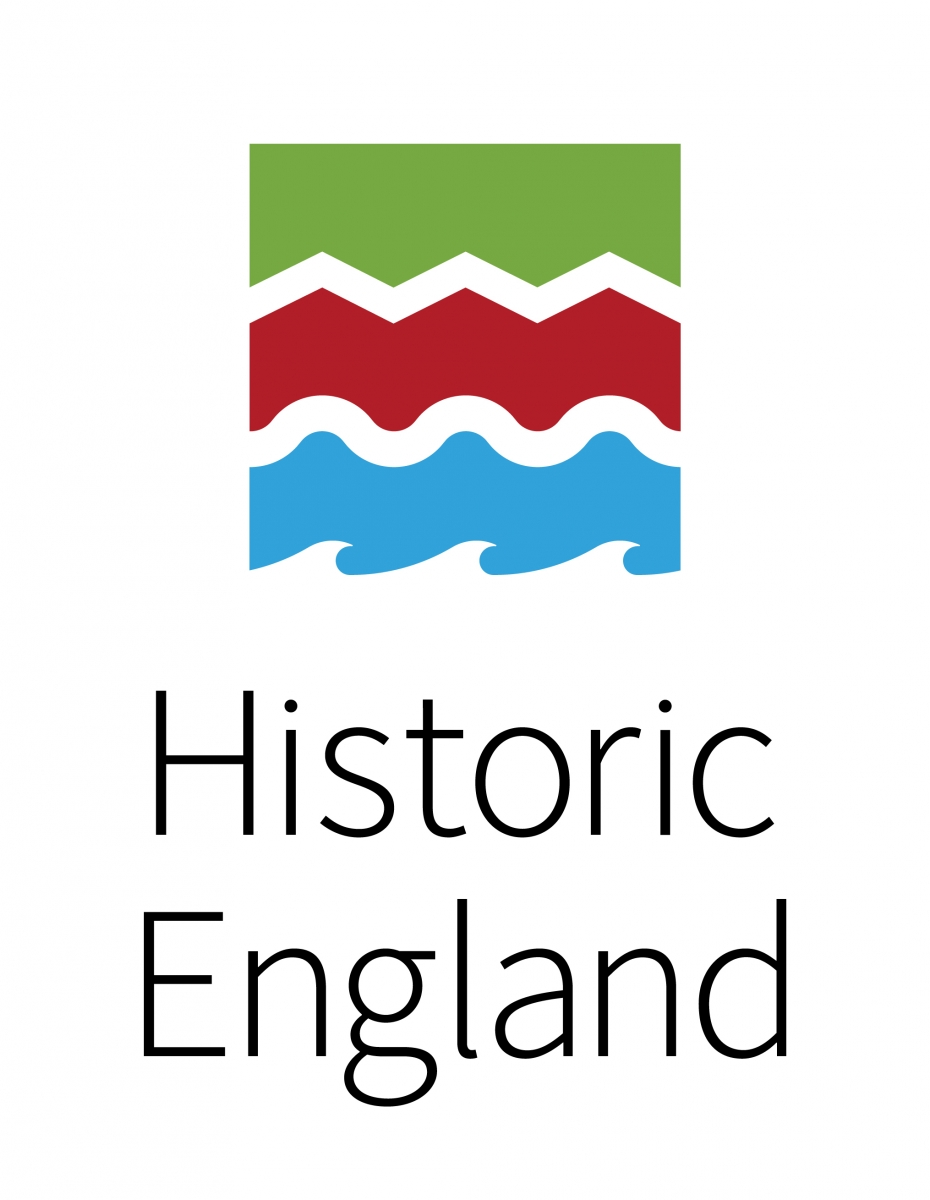

Tuttles Building
known buildings in Station Square. The building was acquired by father and son Henry and Ebenezer Tuttle in 1886. Henry had previously owned a number of grocery and provisions stores in various areas of Lowestoft but had quickly outgrown them. In 1888, Tuttle & Son opened their ‘BonMarche’ department store to the public. By1890, Bon Marche had added a dressmaking department and in 1897 the whole store was refitted to include sections such ashaberdashery, laces, wool, hosiery, and accessories. Ebenezer Tuttle was a notable figure of Lowestoft life. In 1891 he was elected as Town Councillor and by 1895, he had been promoted to the Alderman bench. Ebenezer went on to be Mayor of Lowestoft from 1904-1906. From 1911, he resided at Cliff House in Kirkley and in December1921, Ebenezer died at London Road North Methodist Church aged 70
Turret Building
Built in 1891 by Thomas Porter, at the request of engineer and mayor of Kings Lynn, Frederick Savage. The Turret Building became a popular landmark of Lowestoft due to its notable turret on the roof. If you look closely on the building today, you can still see the FS insignia featured throughout the architecture. The Turret building was built for the benefit of Savage’s grandchildren and consisted of three separate residencies on the first floor and shops on the ground floor. Sadly, the iconic turret was destroyed in a fire in July 1964.
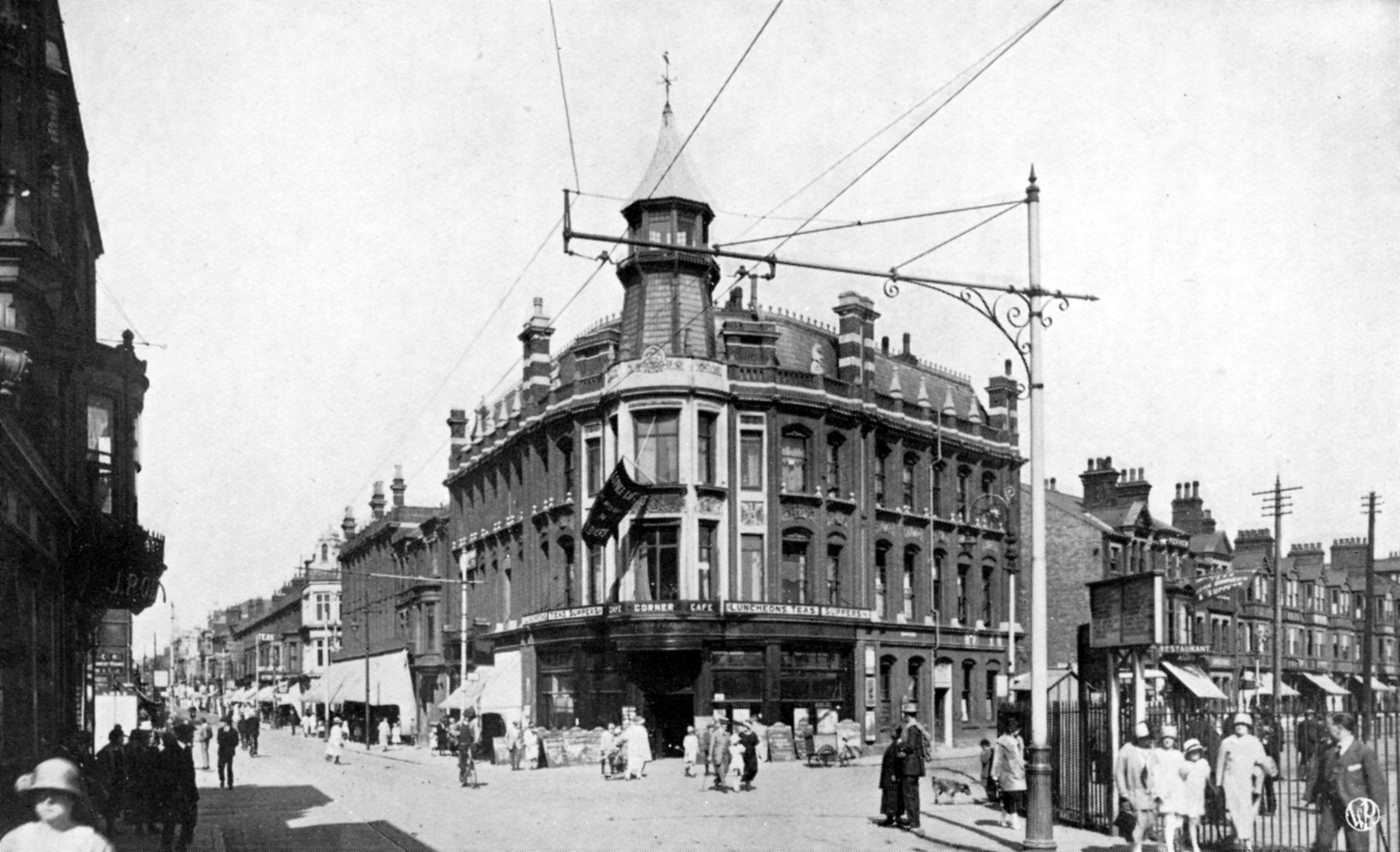
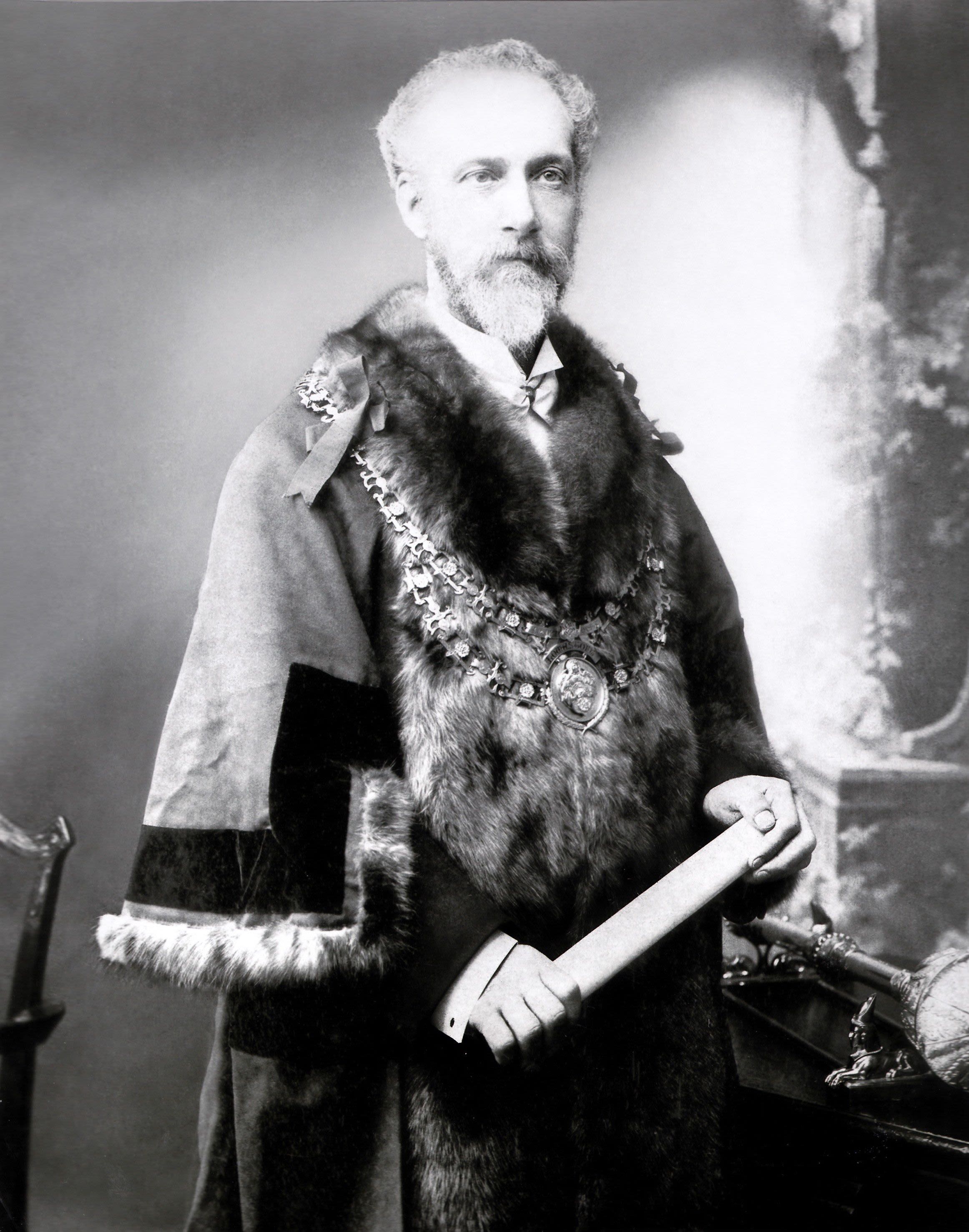
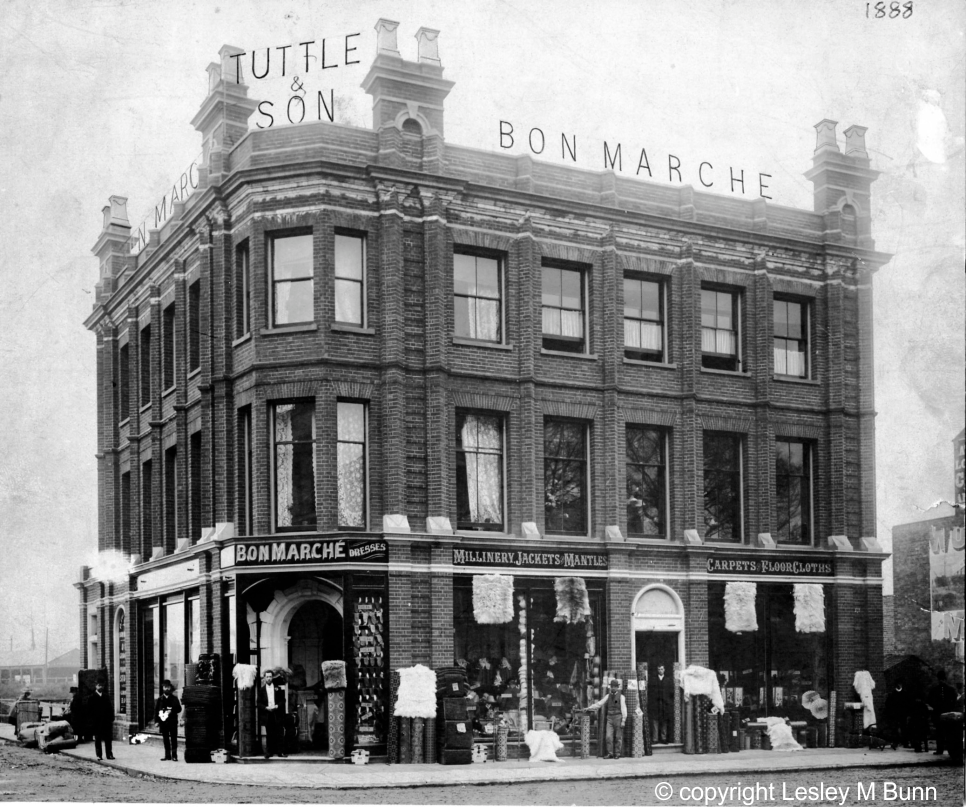
THE GROVE ESTATE
The London Road North area once looked very different! Up until 1885, a 6.5 acre grand estate named The Grove spanned the whole of the London Road North site. Featuring a large house, luscious garden sand opening onto a wide turnpike road, The Grove displayed the wealth of the town. Originally owned by the Somerleyton Estate, The Grove was inhabited by Mary Rodham until her death in 1884. In July 1885, The Grove was purchased by Richard Smith, owner of the Suffolk Hotel, for £20,000.By October, the estate had been demolished and by January 1886 the first building plots were advertised in the Lowestoft Journal.
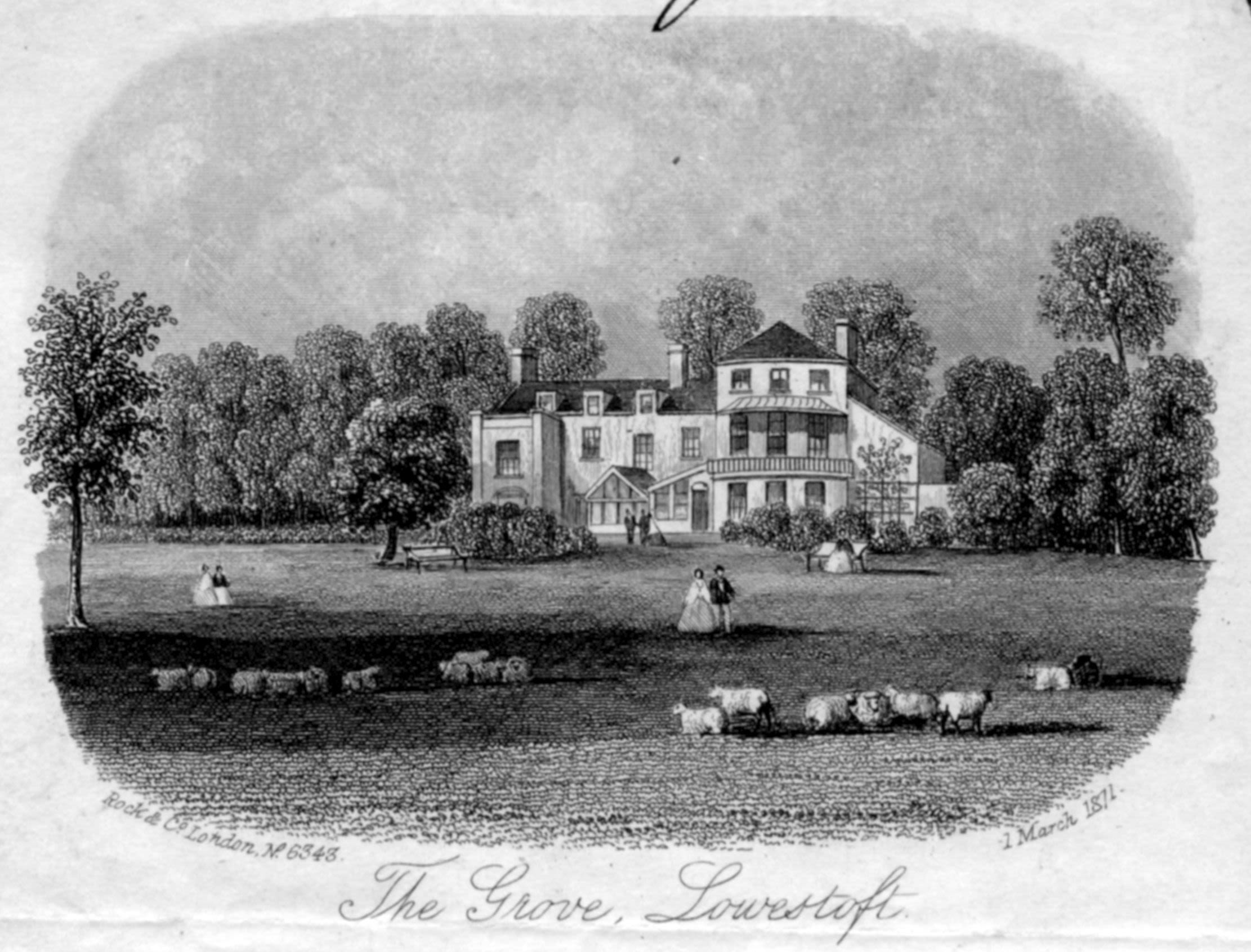
POST OFFICE
Lowestoft Post Office was originally a single storey building in the 1870s and was built upon in 1909 by C Roper. The old Post Office is well known locally, having been the centre of the postal service in Lowestoft forclose to 150 years before its closure in 2016. Its history as an iconic building in the town centre is long and varied. The article from the Norwich Mercury details a piece of that history - an attempted arson on the building in 1893, where someone had thrown a match into the building’s letter box, destroying some twenty letters
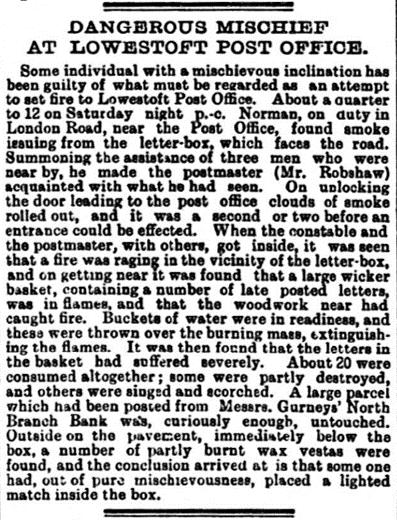
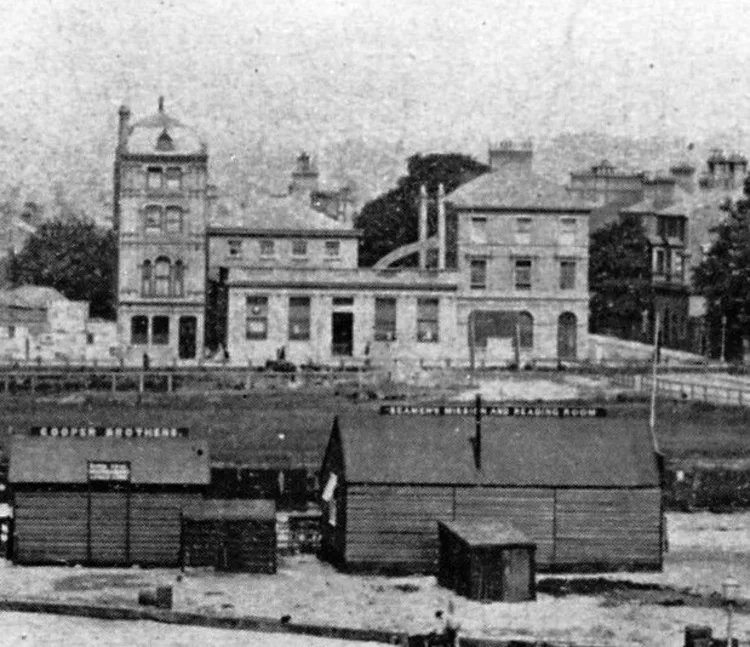
RAILWAY STATION
The Railway Station at Lowestoft opened in 1847 and has been a popular stop for coastal holidays since the Victorian era. The story we have chosen to reflect the spirit of this building is that of the local station master, James W. Smith, who was promoted away to Norwich. The local paper recorded his departure in 1900 and noted how popular he and his wife were in the town, and that he would be sorely missed. This story reflects the closeness of Lowestoft life in the early 1900s, and the importance of the station staff within the local community.

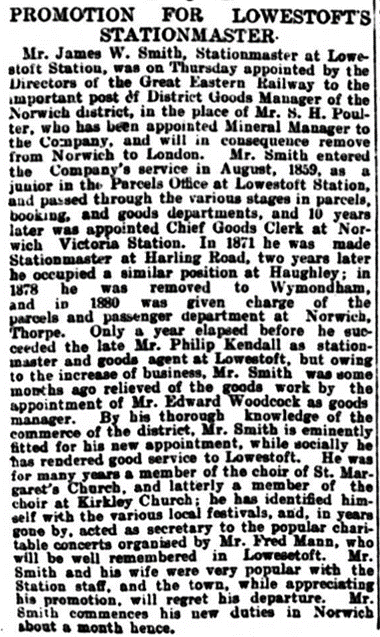
SUFFOLK HOTEL
Originally a Coaching Inn, The Suffolk Hotel in Lowestoft was built in 1873, and was a fixture of London Road North for almost a century before its demolition in 1971. Advertised at the height of its popularity as having ‘foreign wines & spirits of the choicest quality’. The building later went on to be Liptons Supermarket, before becoming a restaurant in1984.
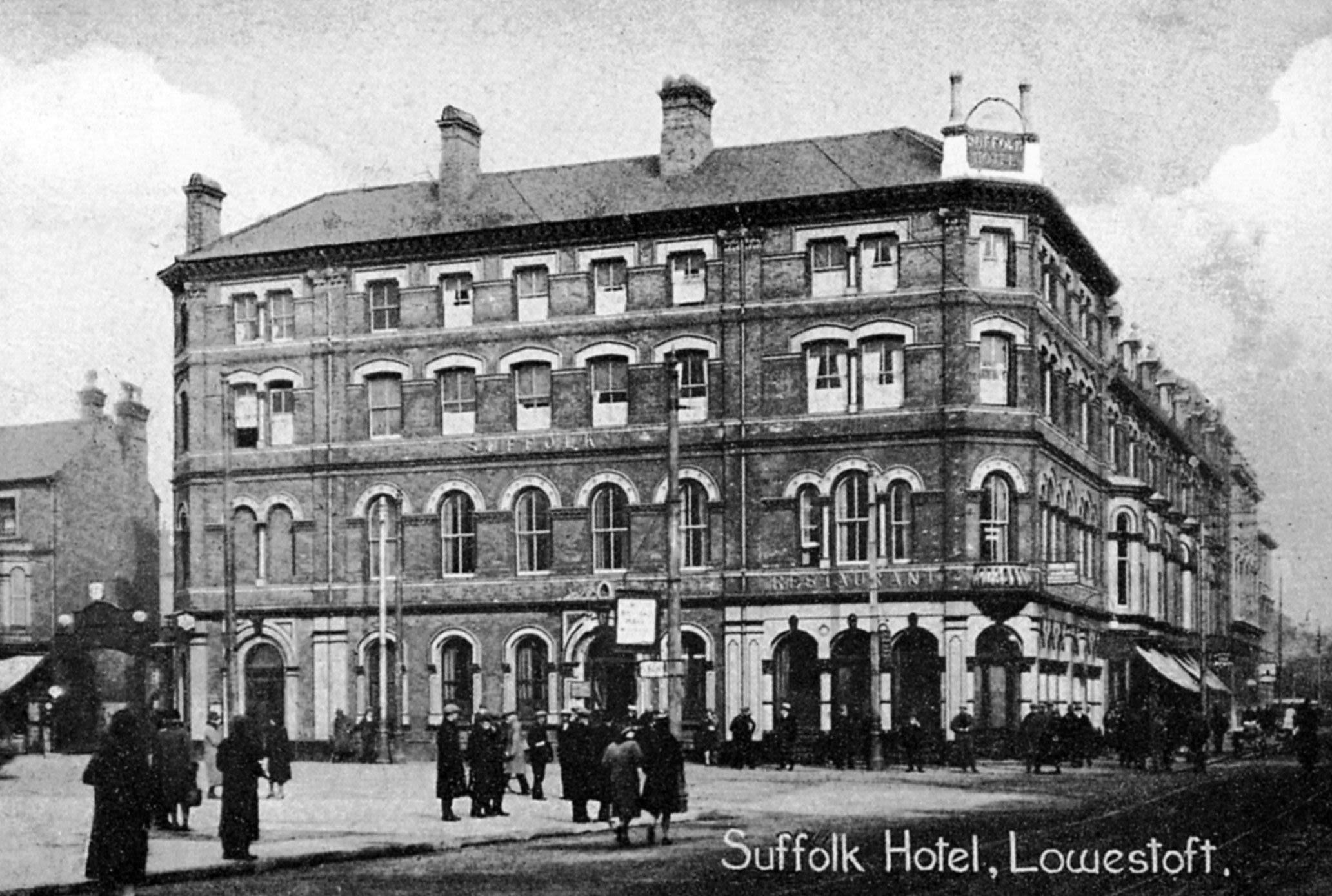
PORT HOUSE
Port House was formerly North Quay Customs House and was built in 1831.. Port House is a well-known fixture of Lowestoft quays. It was used as the base for customs, and responsible for enforcing the licensing of vessels, import and export taxes, as well as many other government duties concerning the shipping laws and customs of the quay
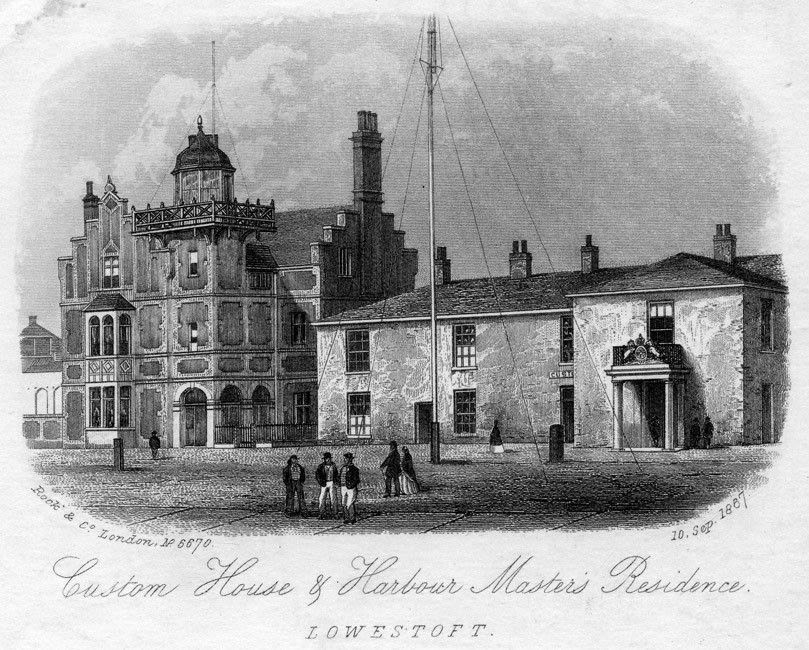
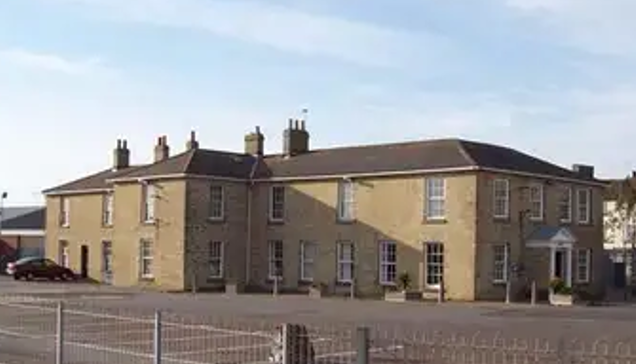

Origins of the High Street
Lowestoft’s Original Town Centre In Old Norse, the name Lowestoft is a combination of the personal name Hloðvér and toft, translating into ‘homestead’ or ‘dwelling’. According to the Domesday Survey of 1086 Lothuwistoft began as a small agricultural village consisting of no fewer than sixteen dwellings. The oldest part of Lowestoft is situated upon the old clifftop in the north around the historic High Street
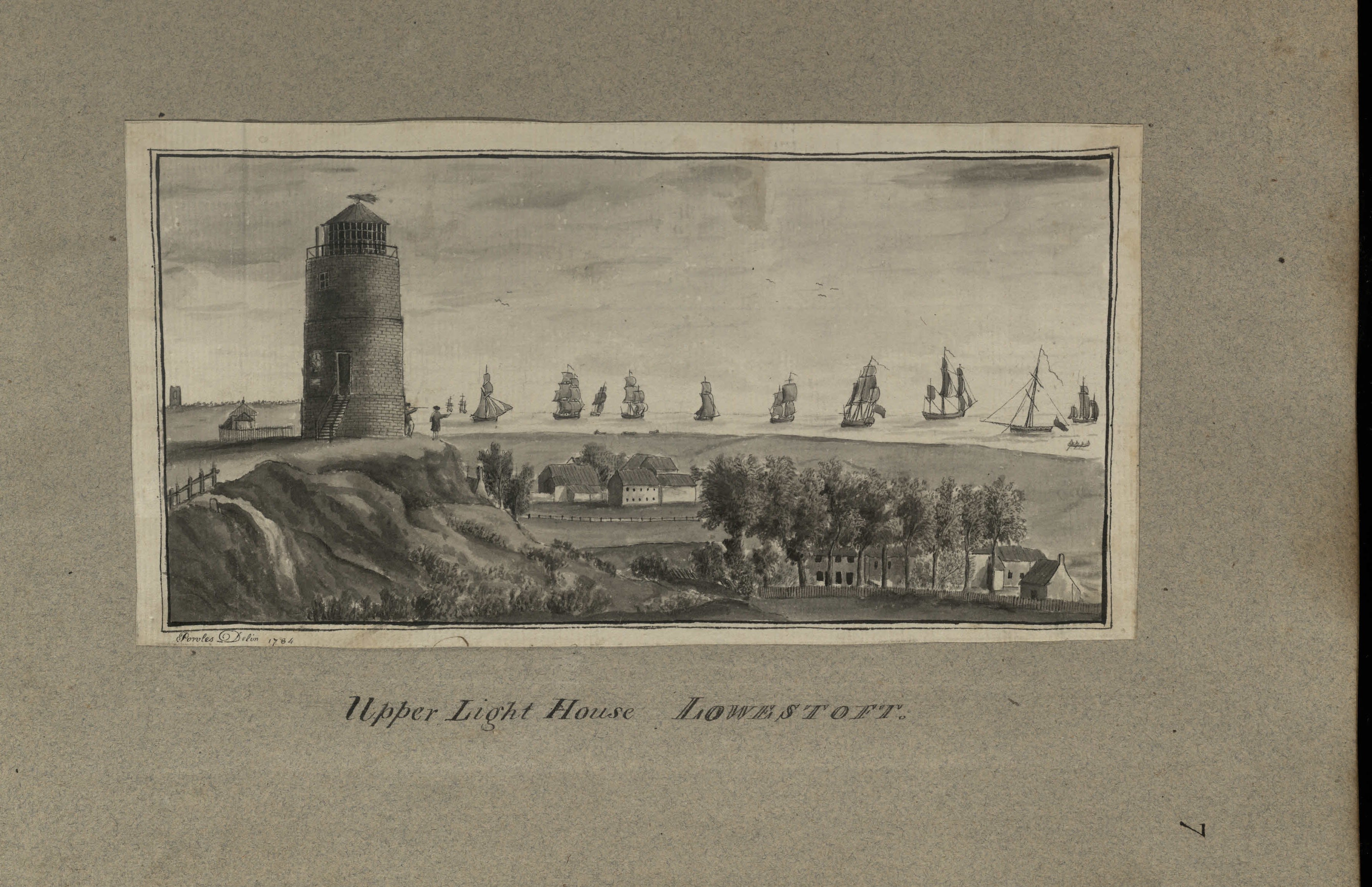
The Scores
Historical Lowestoft’s earliest dwellings were close to the beach, but it soon became clear that flooding and erosion made this a hazardous place to live. By the 14th century, the Lord of the Manor ordered all residents to relocate to the top of the cliffs. This was also problematic as locals had to cross the cliff to move supplies to and from the town and the sea port. Gullies began to form naturally along the cliff faces. These gullies would come to be the present-day seven high street Lowestoft Scores. Many scores have changed name over time. Crown Score may have been named Lion Score, where the Red Lion Public House stood until 1898. Mariner’s Score lay at the crossroads beside Bayfield’s. This score is notable for its original name of Swan’s Score names after the Swan Inn. While the larger scores such as the Ravine were natural clefts in the landscape, some narrower ones were gradually formed by fish merchants to give access from their homes on the cliff to their net stores and fish houses below on the beach.
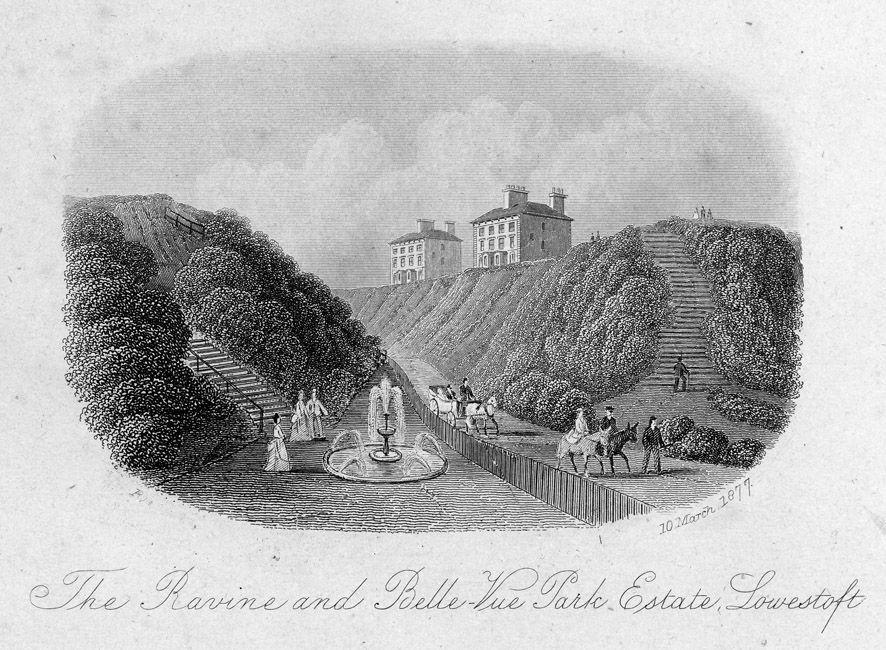
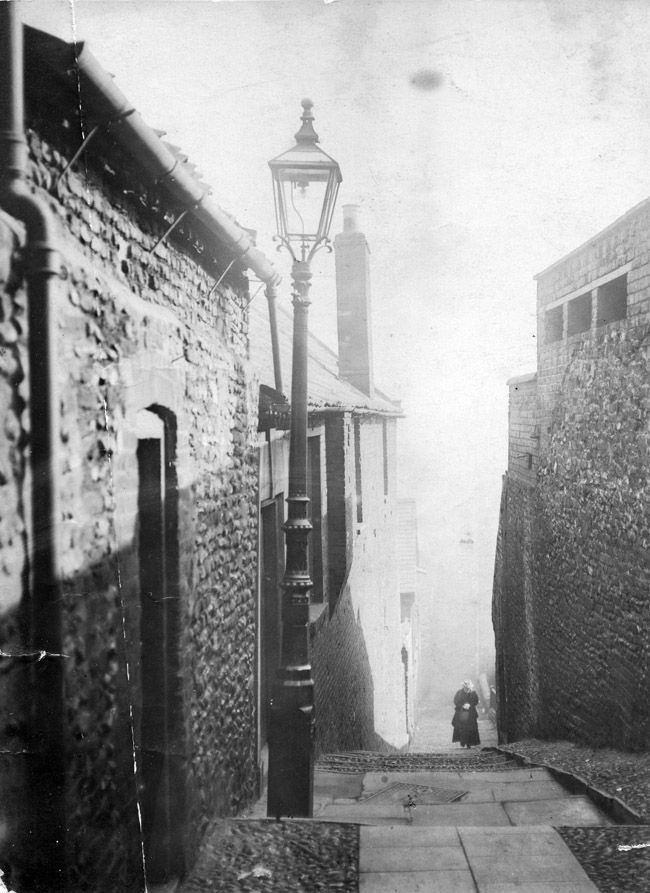
Flint's Score
Witchcraft was allegedly performed on Wilde’s Score and the High Street during the 17th Century. These rituals were the work of local women Amy Denny and Rose Cullender who were accused of cursing the town following troubles and disputes in the local fishing industry. In the 1660s Denny and Cullender were placed on trial at Bury St Edmunds court where they were sentenced to execution by hanging.

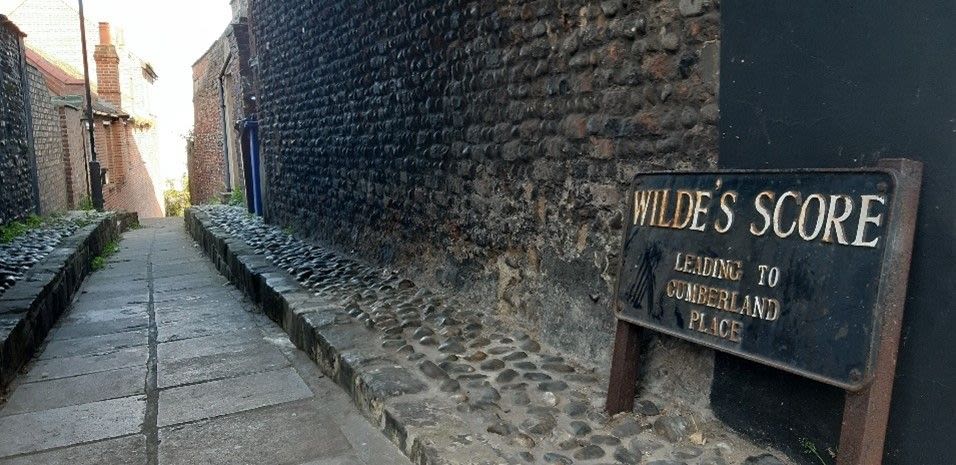
No. 150-152 Crown Hotel Site
The Crown Hotel was built in the 17th century and was a public tavern and also part of a larger business owned by Youngman and Preston from 1872.The owners had stakes in multiple properties attached to the Crown, including the Eagles Brewery. Built in 1856, it was one of the leading ale-makers in Suffolk. By November 1904, the brewery was sold for £40,278 to County of Suffolk Gentlemen and The Trustees. The brewery finally closed in 1922.
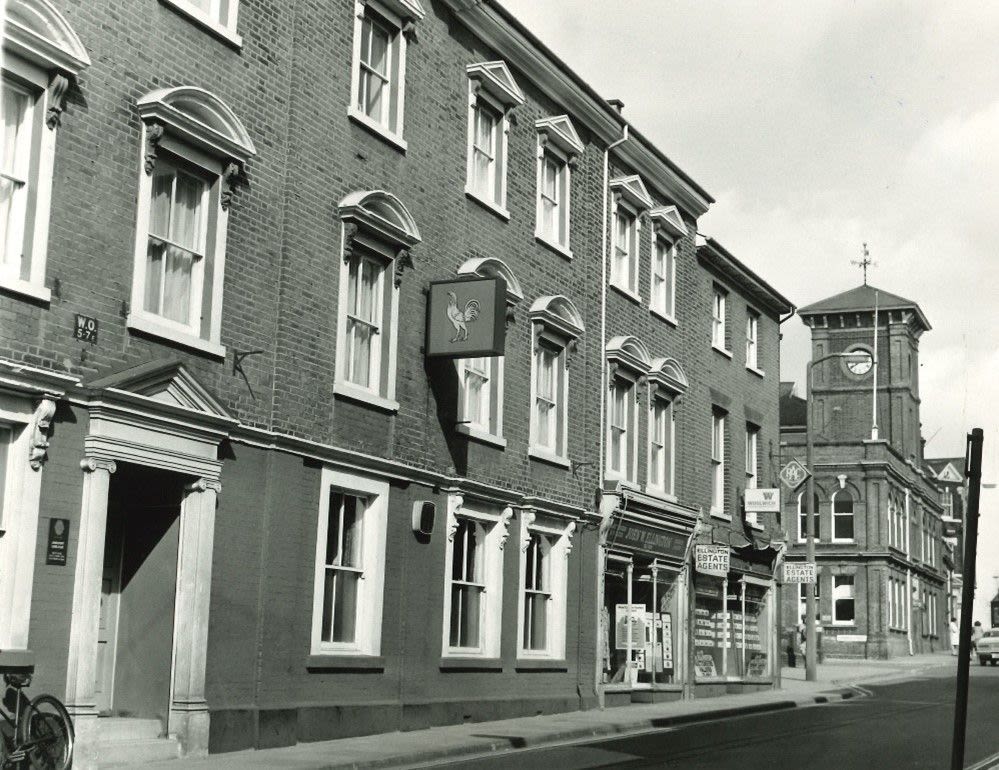
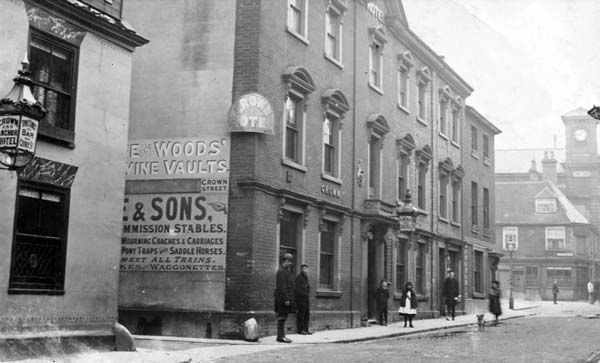
Old Town Hall
Built in 1857 the Old Town Hall was constructed on top of the previous Town Chamber, Chapel, and Corn Cross. With the widening of the high street in 1898, the town hall was rebuilt with a new tower and extensions. Samuel Morton Peto, a local commissioner and pioneering civil engineer was heavily involved in the modernisation of Lowestoft and invested money and resources in the town hall including funding stained-glass windows. The building housed the Curfew Bell of Lowestoft from 1644, it was a warning to clear the streets before 8 pm. However, for many years after it became a tradition to sound the bell when the old clock struck 8 pm every night - except during Sundays and in periods of war.
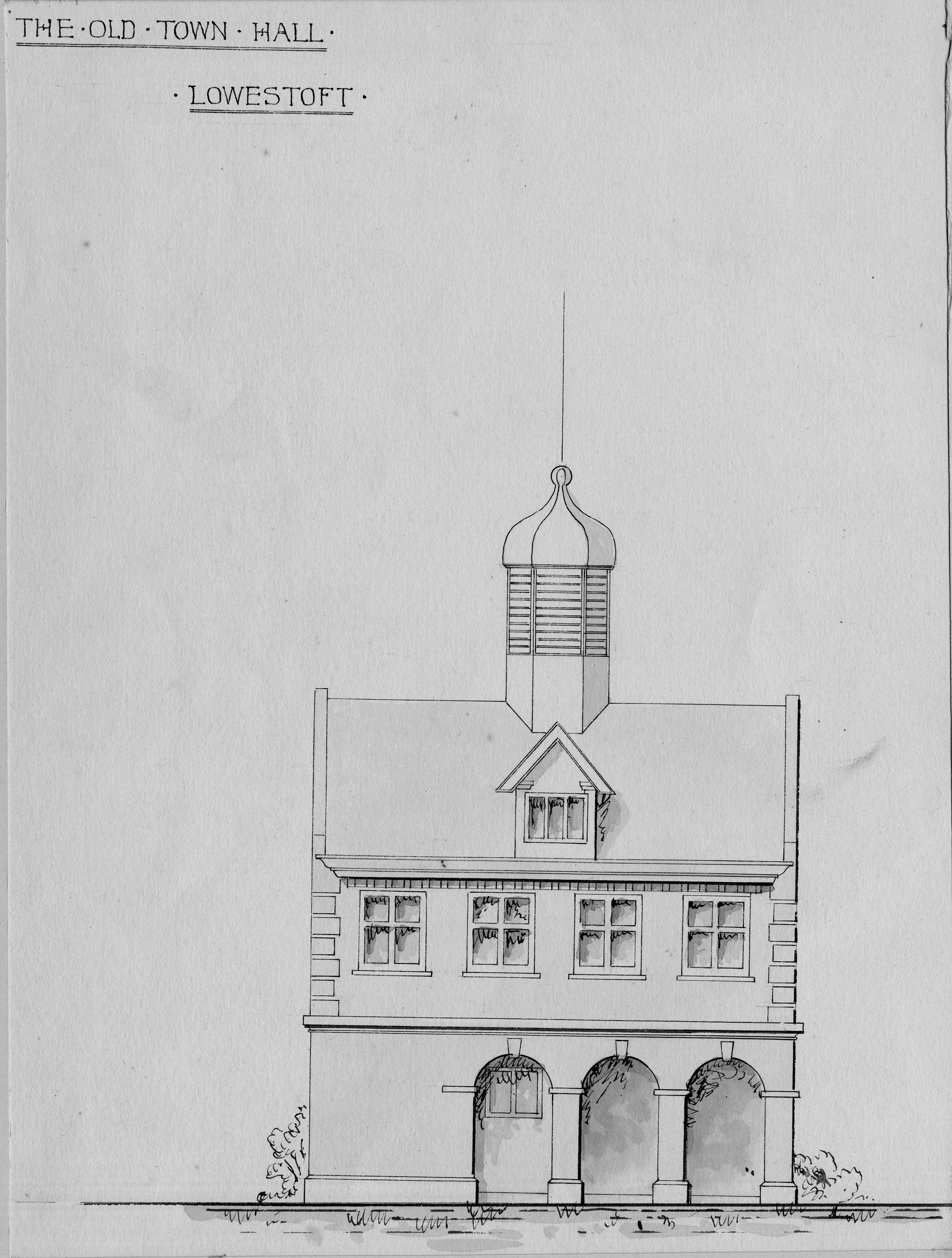
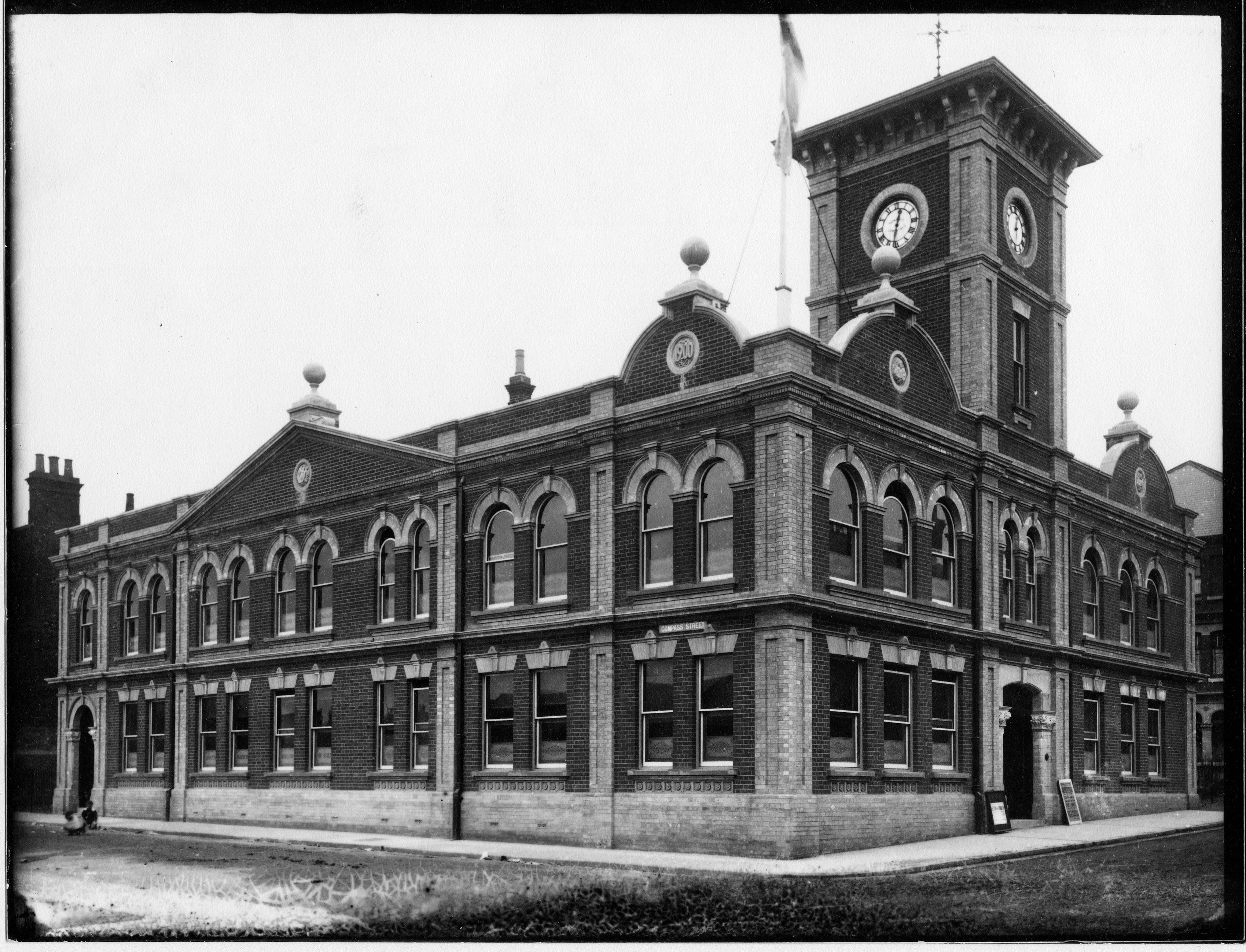
Flint House
Dating back to 1586, the Flint House is one of the oldest buildings on the High Street and was originally the home of William and Mary Wilde. Above the front door are the letters W and M and the date 1586.Behind the house Mr Wilde established a Grammar School in 1788for ‘the free education of boys from fishing families’. The school remained on Wilde’s Score until World War II when the pupils were evacuated and the building later bombed.
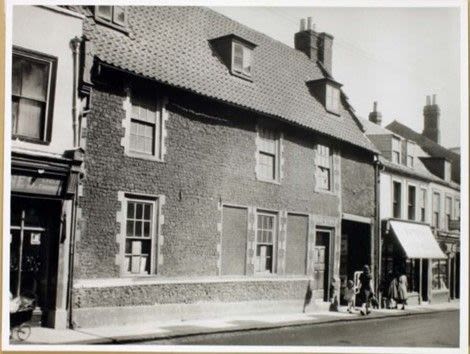
Triangle Market
Lowestoft had been royally granted a market and fair in the year 1308. Market and trade stalls would have been set up between Swan Lane and Blue Anchor Lane. However, this area caused congestion in the narrow streets so the market was moved further out of town to allow space for stalls and livestock
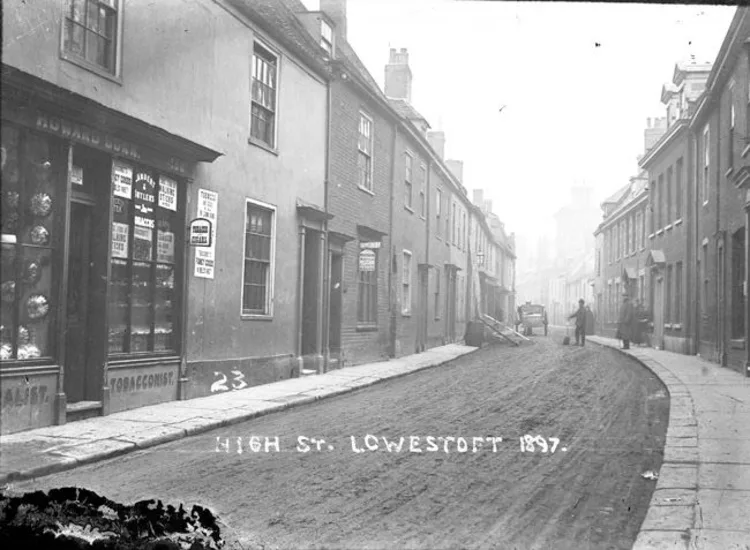
NO. 105-106- Cosy Corner
Lowestoft’s original cinema was known as Cosy Corner. Built in 1914 it was a popular for playing many early silent comedies. The cinema had500 seats and a 22ft wide stage. A fragment of the cinema’s old sign can still be viewed from the side view on Herring Fishery Score. In the 1930s the cinema was acquired by London-based Show all Ltd who upgraded the sound and projection system and renamed it the Regent Cinema. The building was bombed in World War II and never re-opened to the public.


The Playhouse Theatre-
This stood on the site of the current East Coast Cinema. It was built by F.C Symonds in 1927. It became the Arcadia in 1953 when it was purchased by Roy Barbour, and then when it was sold in 1959 it once again changed name and became the Theatre Royal. Throughout its life the building went through a number of changes, becoming first a cinema, then the Coronet Bingo Hall and finally back to a cinema with the opening in of The Hollywood Cinema in 1989. It is now called the East Coast Cinema and still operates to this day.
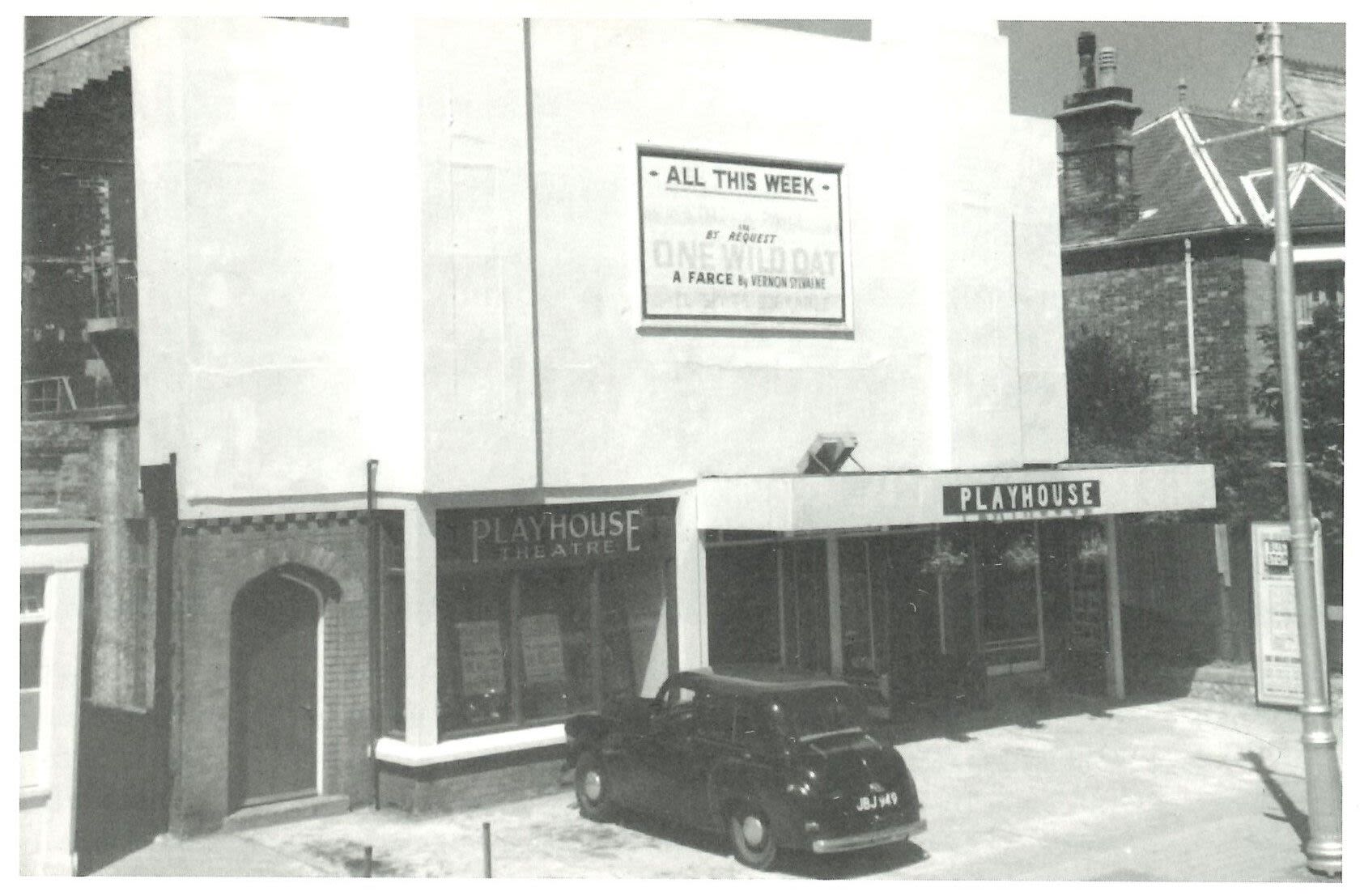

No. 198-204 -Lillian’s Milliner
From at least 1972 this property was Lillian’s Milliner. The shop sold hats, ladies and children’s clothes ,as well as fabrics and trims for people to make up into garments and accessories.
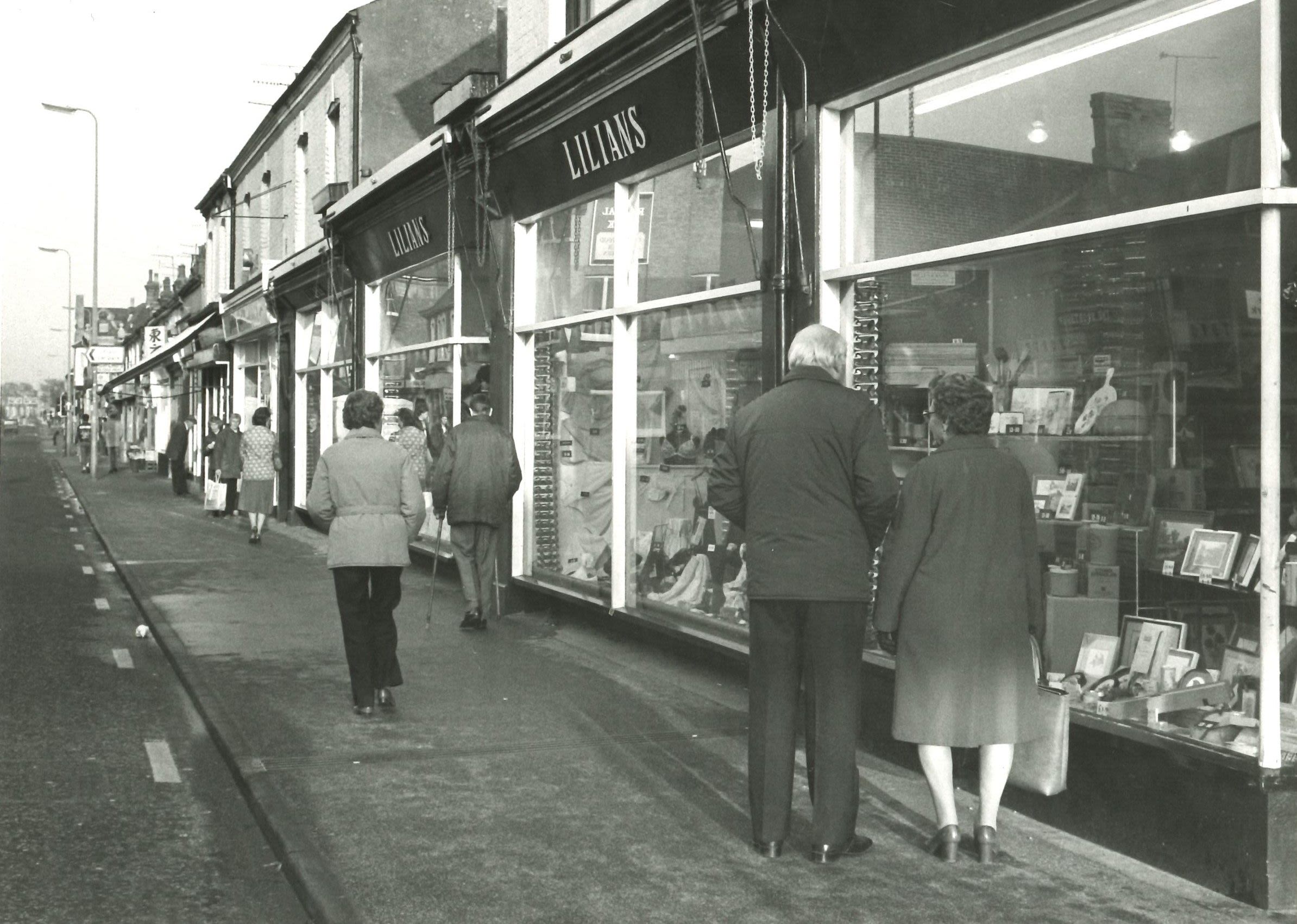
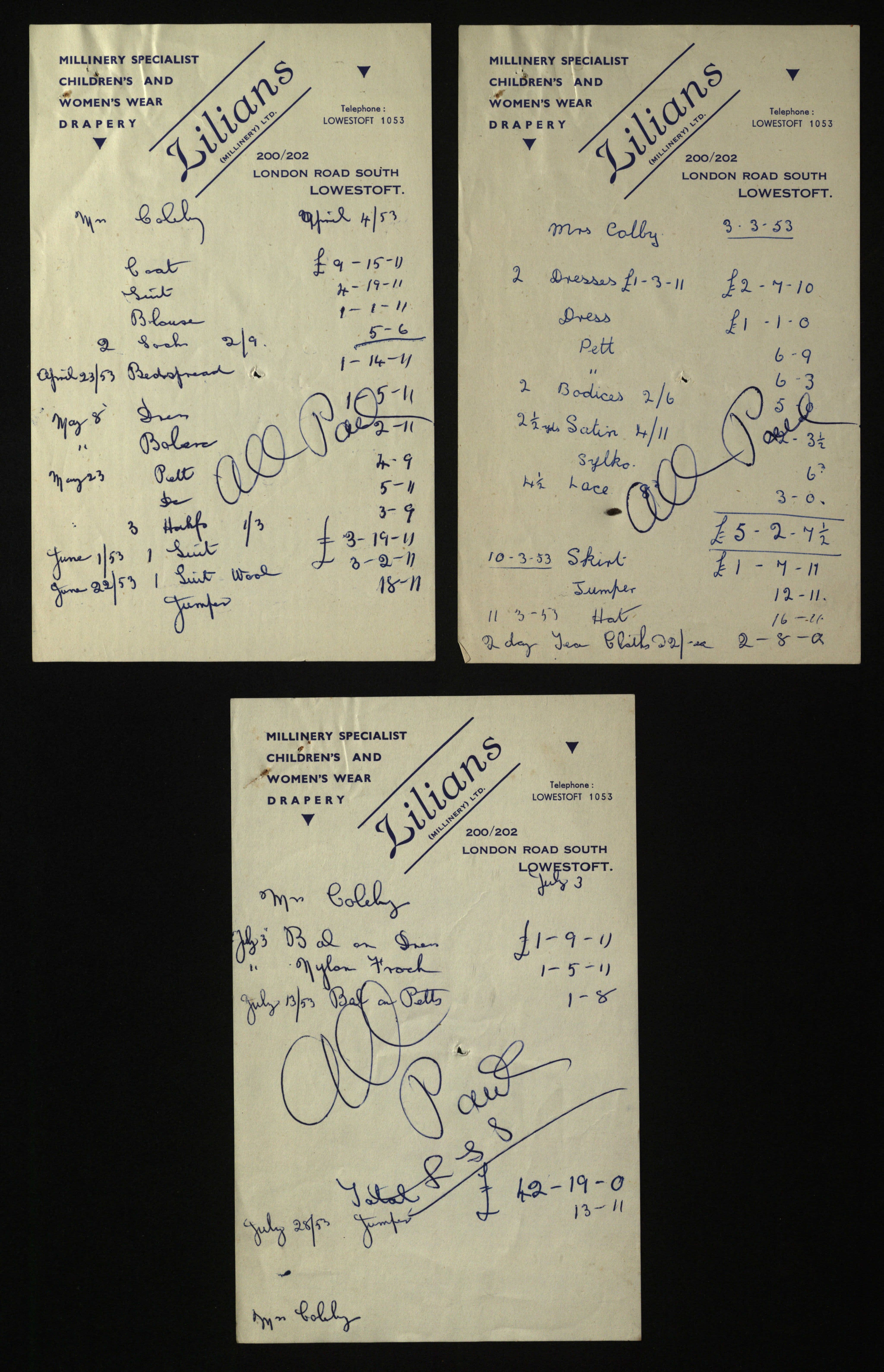
No. 219-221 -Stead and Simpson-
Stead and Simpson bootmakers rana shop here from 1913 until at least1972. From 1954 219a and 221a, the flats above the shop were private residences of various individuals, including a Mr Beales who eventually used both properties from 1972.
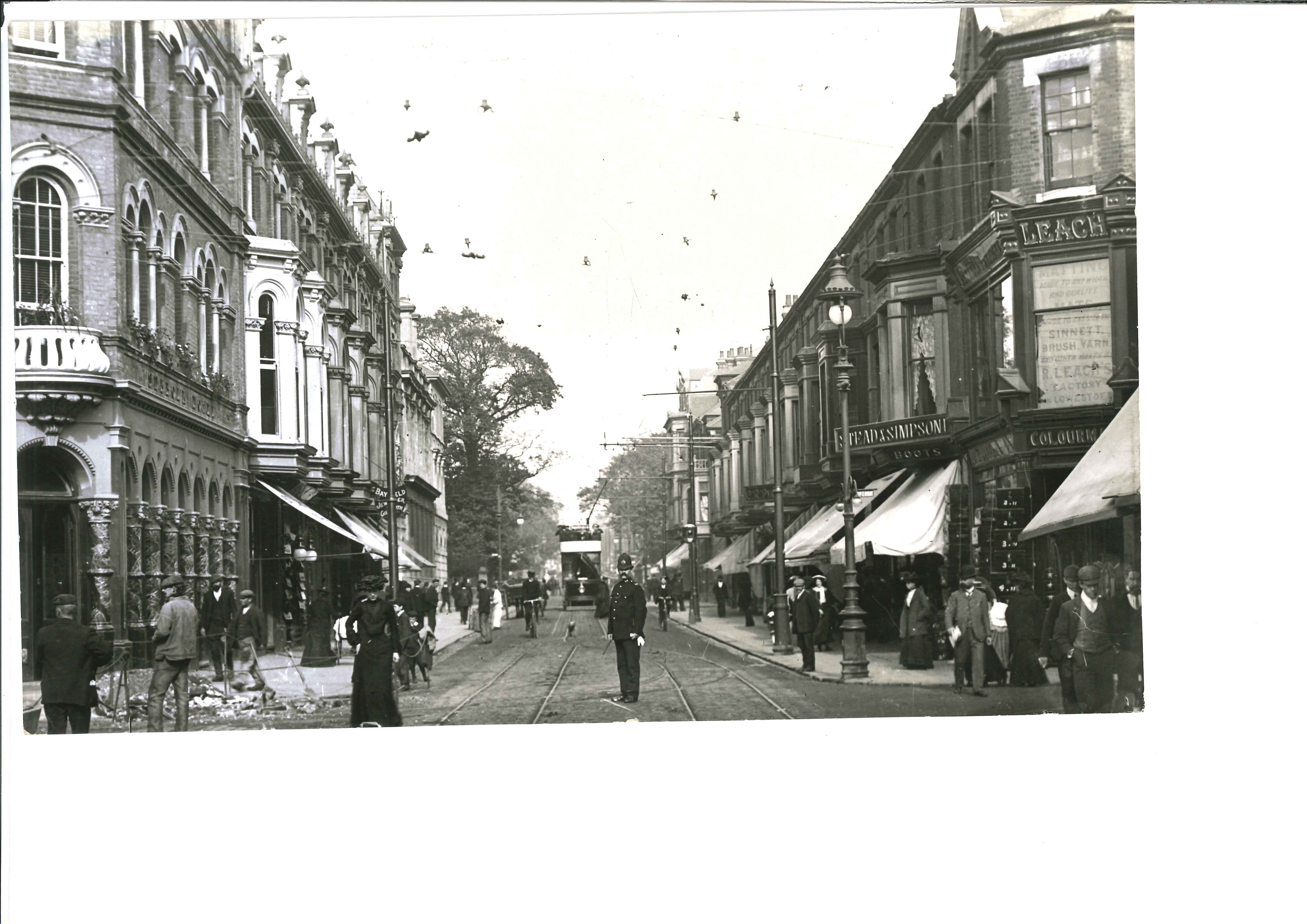
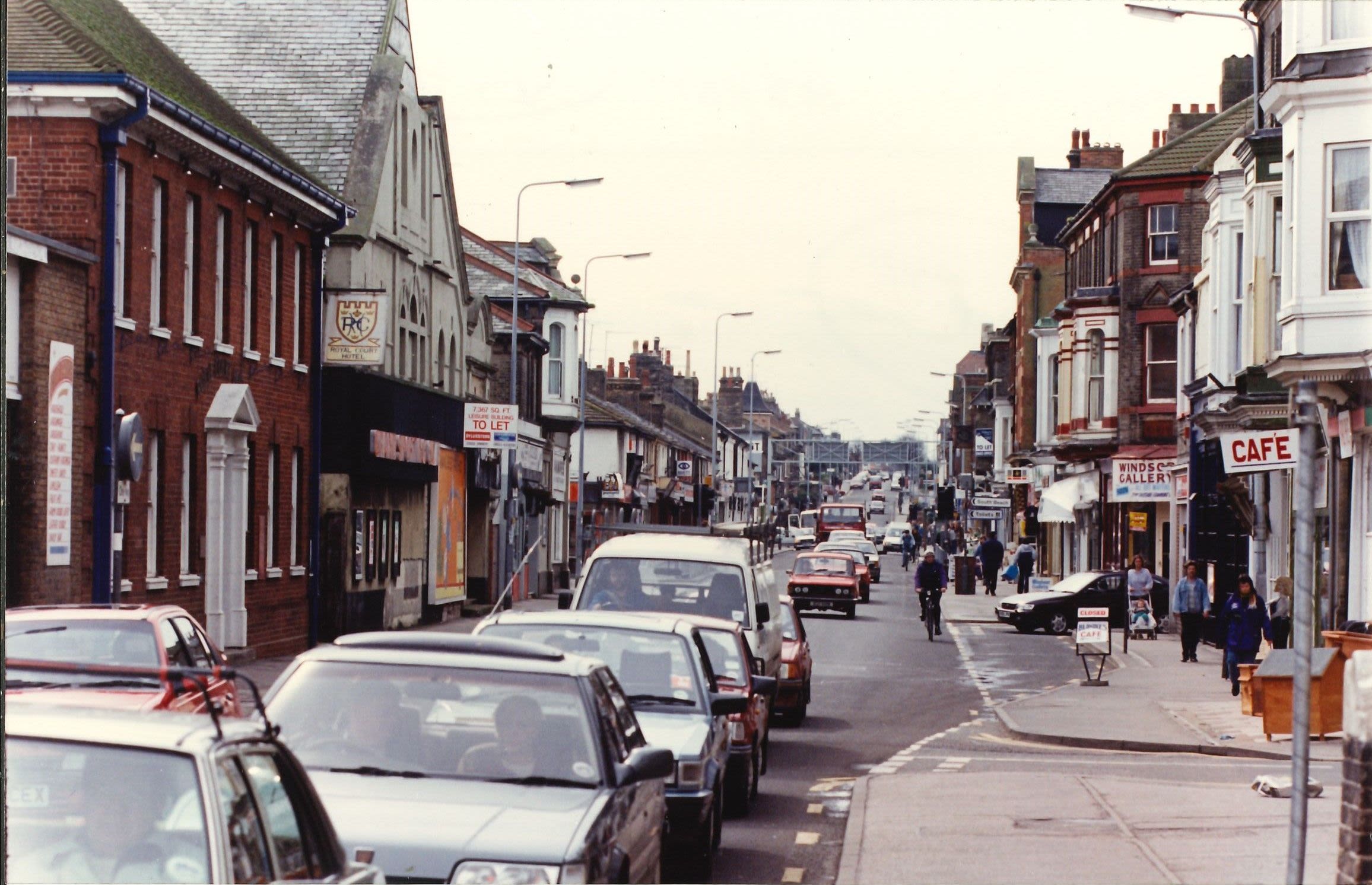
no.146- Royal court Hotel
From 1954 until at least 1972 this was the residence of H.M. Inspector of taxes office
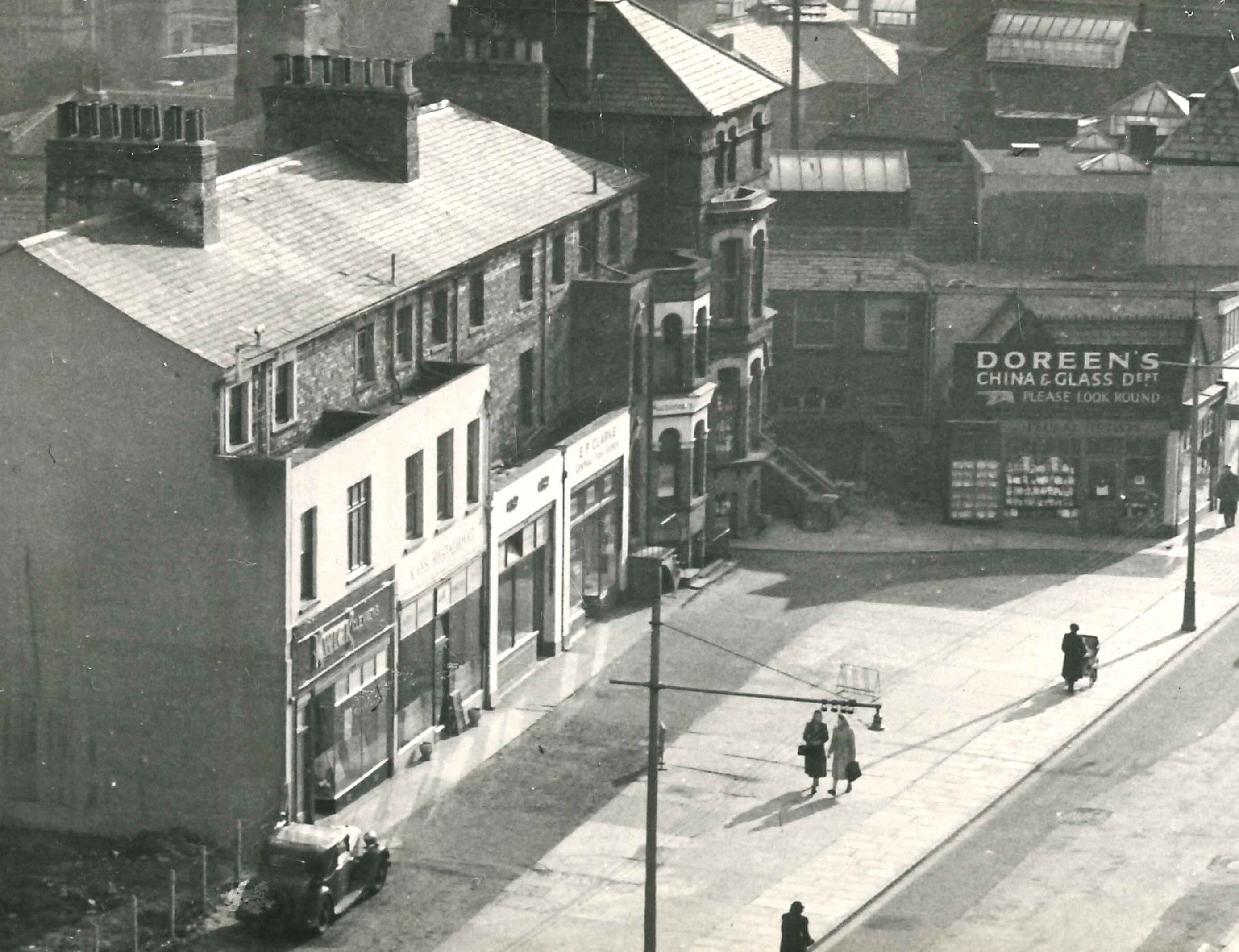
No. 168 -Kwick Cleaners-
Originally a watchmakers shop it became Fenton’s fashion in 1948before becoming Kwick cleaners in 1954 until 1963. It renamed to express cleaners in 1972.
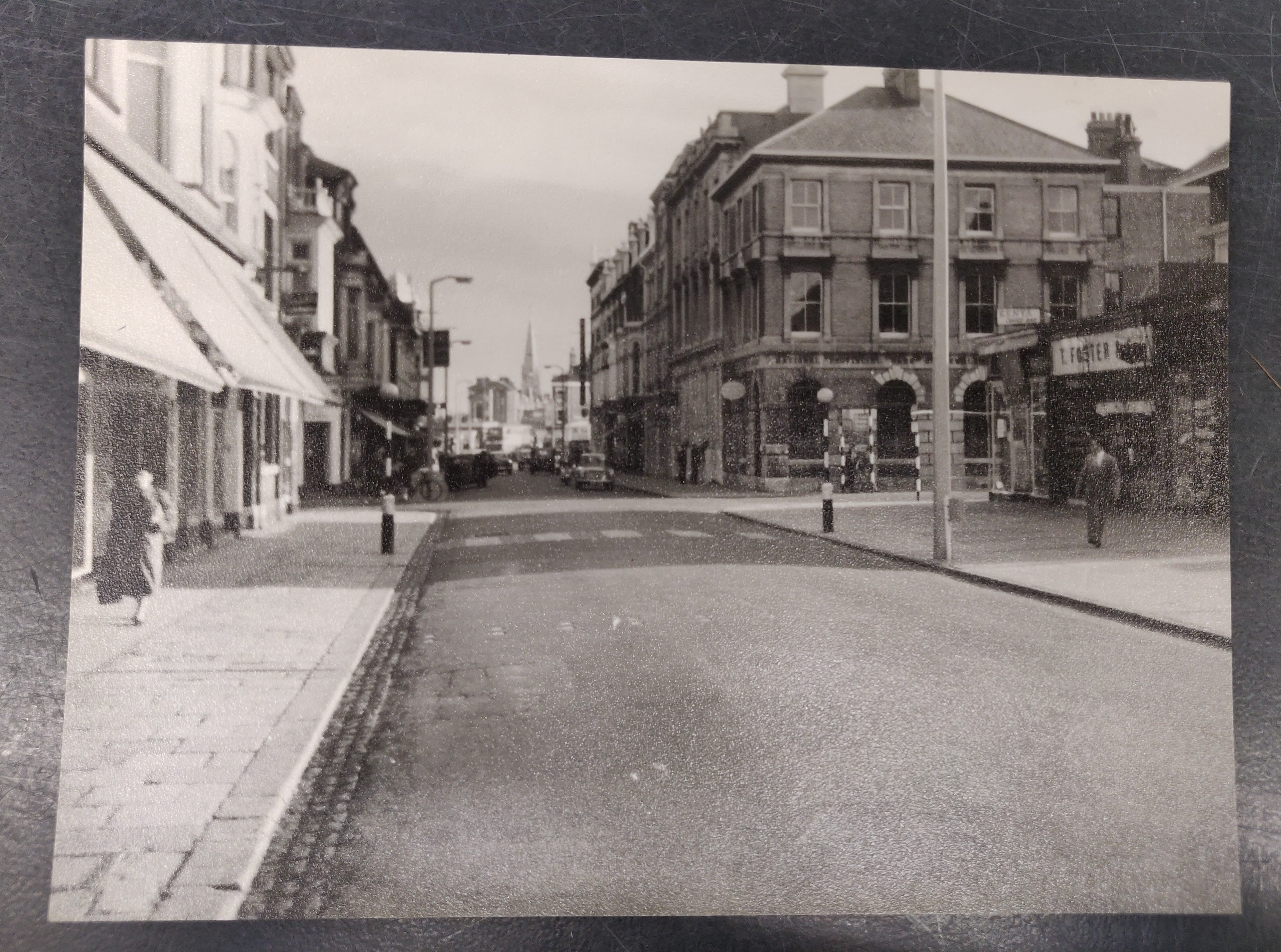
No. 181 -National Provincial Bank -
Prior to being a bank No. 181 was a fishmongers run by Albert H. Moore From 1909 the building became National Provincial Bank of England with a string of listed managers: J.G. Robey, William C. Gribble, Harold Edward Cartwright, W.R. Farrow, H. Roberts. In 1970 it became national Westminster Bank.
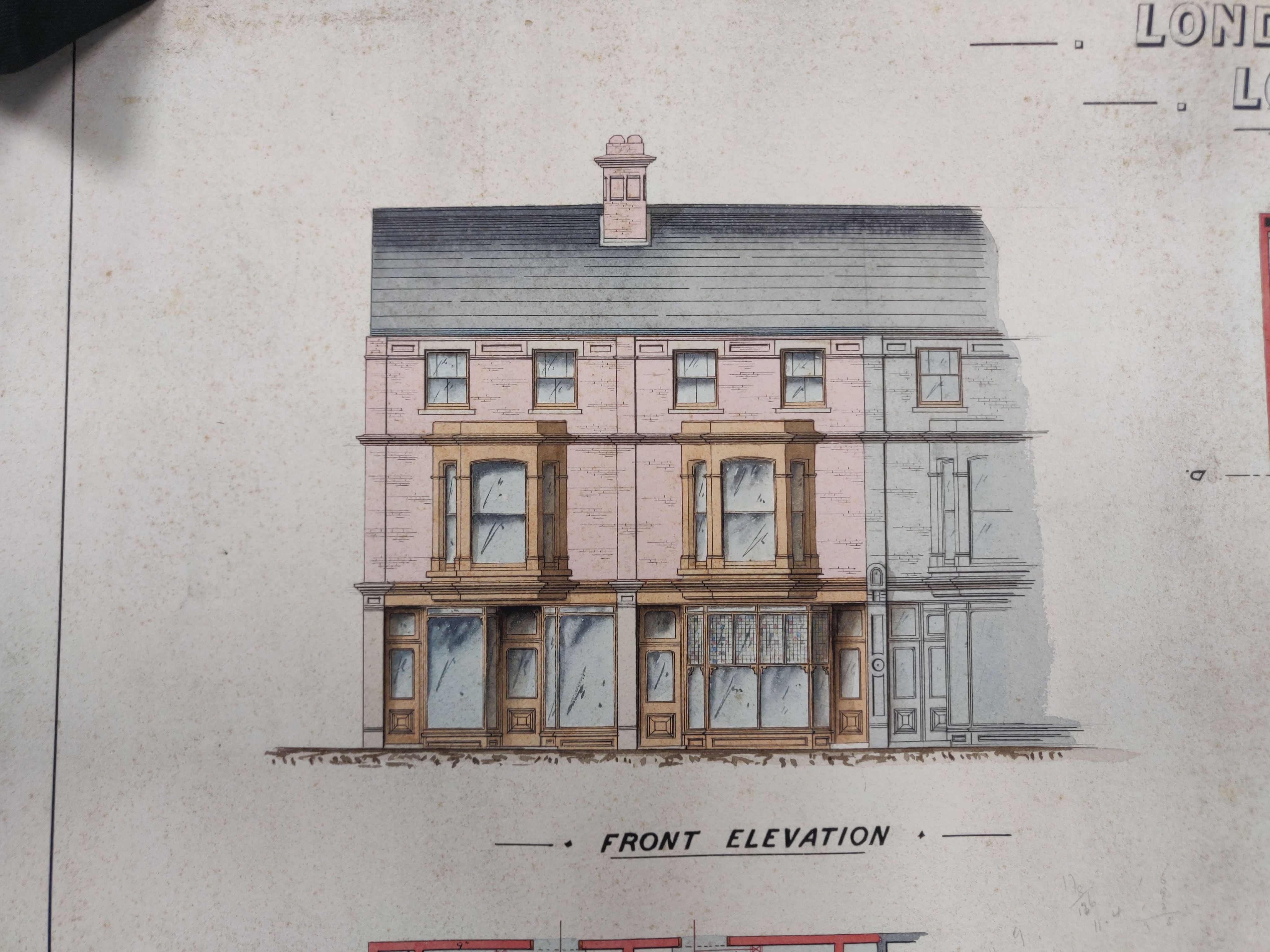
No. 184 -Home and Colonial Stores
From at least 1932 this shop was a Home and Colonial Stores Ltd. The decorative exterior can be seen in the building plans. In 1948-49its name expanded to Home and Colonial Store H&E Retail Ltd. and in1954 became H&C retail. The Shop was gone by 1972
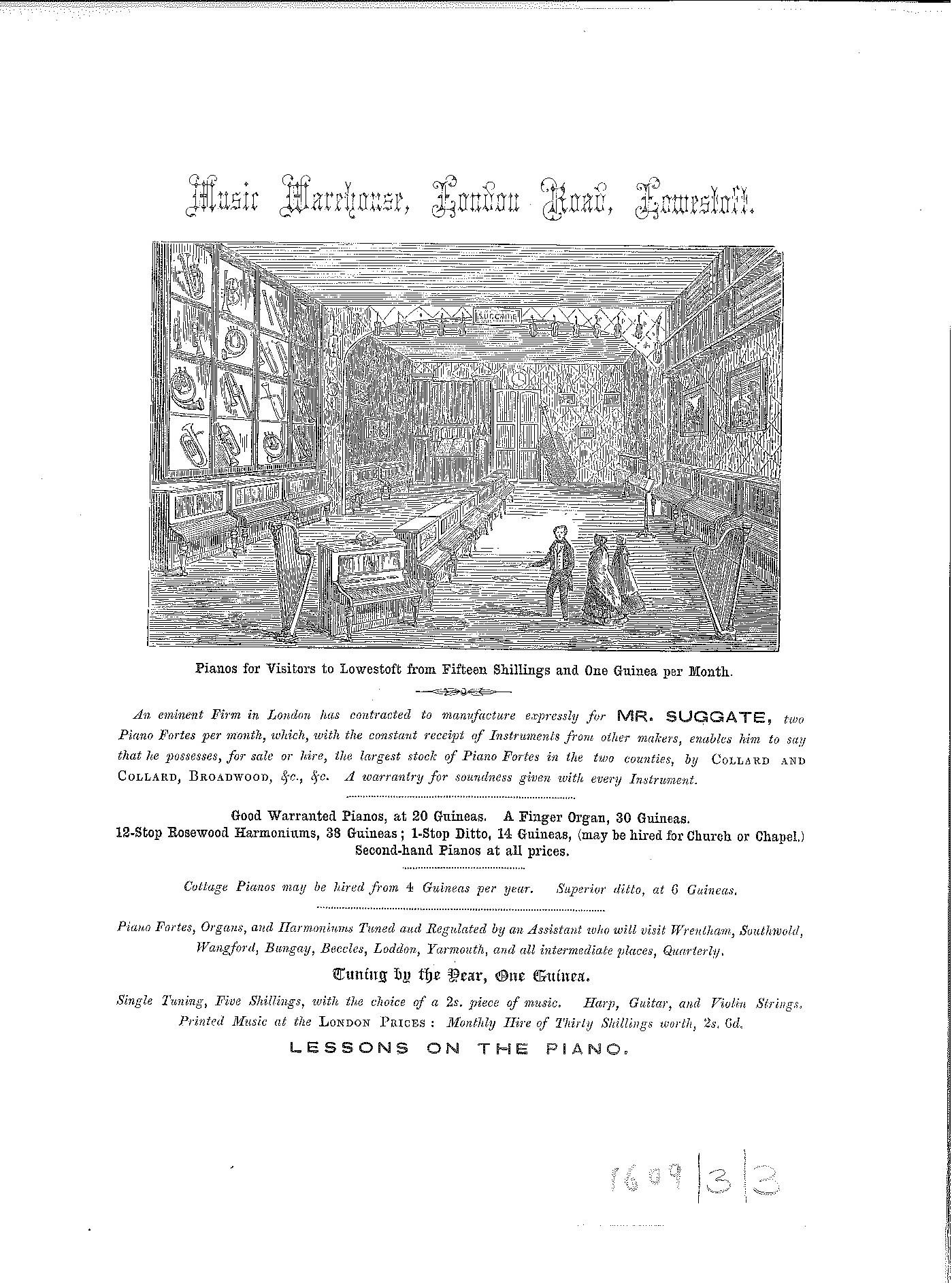
No. 193 -Music Warehouse
From 1909 to 1932 No. 193 was a Music Warehouse owned by Norville Clifford. After this the property became On The Square Library Ltd with some attachment to the Royal Oak Hotel
No. 241 -Greengrocers
From 1902 until 1963 the Dorling family ran a Greengrocers at No.241. The business was family owned and run over the years by Thomas Dorling, Edwin Dorling, Frank Dorling ,and Miss Dorling.
